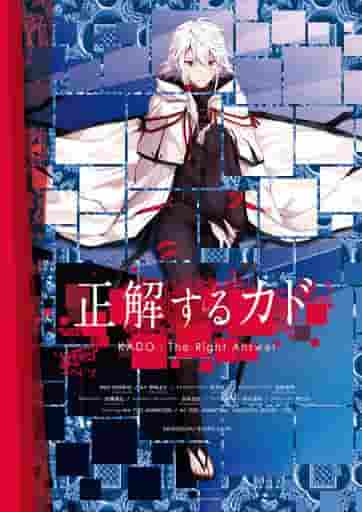Review of "Slavery War": A story of those who fight against a cruel fate

Full review and recommendation of Slave War - DoreisensouoverviewSlave War is a 1931 Japanese animated film produced by Prokino (Japan Proletarian Film Alliance). It depicts the exploitation of China by the imperialist bourgeoisie and the rebellion of the Chinese proletariat against it. It was released in theaters and is based on an original anime. It was released in March 1931 and has only one episode. story■ Story The imperialist bourgeoisie was always seeking new markets and sources of raw materials, and China became a target for exploitation. The enslavement of workers and peasants began, but the Chinese proletariat rose up unyieldingly. Main Staff■ Main staffScript: Tetsuo Kitagawa; Cinematography: Shinzo Namiki; Illustrations: Junji Muro, Shigeru Matsumoto, Chin Muto, Yasusaku Doi Historical background and significance"Slave War" was made in the early 1930s, a time of rising proletarian movement in Japan. During this time, the movement for workers' rights was gaining momentum in Japan, and the Proletarian Film League was one of the groups that produced films to convey social messages. "Slave War" is a particularly noteworthy work, with its strong criticism of imperialism and exploitation. This work depicts the process by which Chinese workers and peasants are enslaved by the imperialist bourgeoisie, reflecting the international situation and social problems in Japan at the time. In particular, the scene in which the Chinese proletariat rises up leaves a strong impression on the viewer, calling for the need for social change. Production background and technology"Slave War" was produced by members of Prokino. The screenwriter, Kitagawa Tetsuo, was a central figure in the proletarian movement, and his ideas are strongly reflected in the film. Cinematography was by Namiki Shinshino Katsuzo, and talented animators such as Muro Junji, Matsumoto Shigeru, Muto Chin, and Doi Yasusaku participated in the drawing. Despite the technical limitations of the time, they managed to make the most of limited resources and convey a powerful message. The quality of their illustrations was particularly praised, as they realistically portrayed the suffering and struggle of the proletariat. Evaluation and impact"Slave War" has been highly praised since its release and is considered a representative work of proletarian cinema. In particular, its critical viewpoint on imperialism and exploitation resonated with many viewers. This work also had a major influence on later Japanese animation films, and triggered an increase in works dealing with social themes. However, due to political pressure at the time, the release and screening of the film was sometimes restricted. Nevertheless, "Slave War" is an essential work for learning about the history of the proletarian movement and the history of Japanese animation films. Recommendations and how to watch"Slavery War" is a work of historical significance and high artistic merit, and is highly recommended for those who are interested in social issues and animation films. Although it is difficult to screen it in theaters these days, it is possible to watch it in specialized film museums and archives. It is also recommended to gain a deeper understanding of the background and significance of the work through related books and papers. By watching this film, viewers will be able to understand the social conditions in Japan and China in the 1930s and reaffirm the significance of the proletarian movement. It will also be a valuable experience in learning about the history of animation films and the evolution of technology. Related works and recommendation listHere are some works related to "Slavery War" or that deal with the same theme. By watching these works together, you can gain a deeper understanding.
Conclusion"Slave War" is a Japanese animated film released in 1931, depicting the exploitation of China by the imperialist bourgeoisie and the rebellion of the Chinese proletariat against it. We have comprehensively evaluated and recommended this film through its historical background and significance, production background and technology, evaluation and influence, recommendations and viewing methods, related works and recommendation list. This is a must-watch film for anyone interested in social issues and animated films. |
<<: "Chopstick Snake" Review: An innovative story and appealing characters
>>: The appeal and reviews of "Bunpuku Chagama": A must-see masterpiece for anime fans
Recommend
The movie "Boonie Bears: Bear Heart" is expected to be released during the 2023 Spring Festival
Sina Film reported today that the ninth film in t...
The appeal and reviews of the bonus video for "Tono to Issho" "GACKT to Issho"
"Tono to Issho Bonus Video: GACKT to Issho&q...
"Magical Angel Creamy Mami": The Eternal Charm and Reappraisal
Creamy Mami, the Magic Angel: Once More for Etern...
The new TV animation trailer of "Black Heart Enterprise" will be broadcast on July 9
The TV animation of the popular social animal man...
New photos of the Master Chief actor in the TV series "Halo" are really scary when he is over 2 meters tall
Showtime TV has announced some of the cast member...
The author of Akira, Katsuhiro Otomo, said that he is planning a new manga that will be released soon.
Katsuhiro Otomo, a Japanese cartoonist who create...
Lupin the Third Episode: 0 First Contact - A thorough analysis of the episode recommended for beginners
"Lupin the Third EPISODE:0 First Contact&quo...
"Star-Lord" assures fans: "Guardians of the Galaxy 3" will definitely be there
At the premiere of "The Lego Movie 2" h...
"We Don't Have Wings" review: What emotion was found under the innocent sky?
We Don't Have Wings - Under the Innocent Sky....
Ask Dr. Rin! - The appeal and evaluation of anime from an expert's perspective
Ask Dr. Rin! - Ask Dr. Rin! Reviews and Recommend...
The appeal and evaluation of the movie "Soreike! Anpanman: Fun and Play! Kokin-chan Becomes a Mom"
The appeal and evaluation of the movie "Sore...
The moving and tearful story of CLANNAD: reviews and recommendations
"CLANNAD" - A moving story and its appe...
The live-action version of "Douluo Dalu 2" officially announced that Xiao Zhan will not play Tang San
Recently, Tencent TV officially announced the cas...
The latest trailer for the live-action movie "Passionate Tricks" adapted from the popular love comic book "Innocent First Love" is released
The live-action movie "Passionate Tricks,&qu...
Kizuna Ai TV anime "絆のアリル" announced to start airing in 2023
Today (November 11), the main view of Kizuna AI&#...









